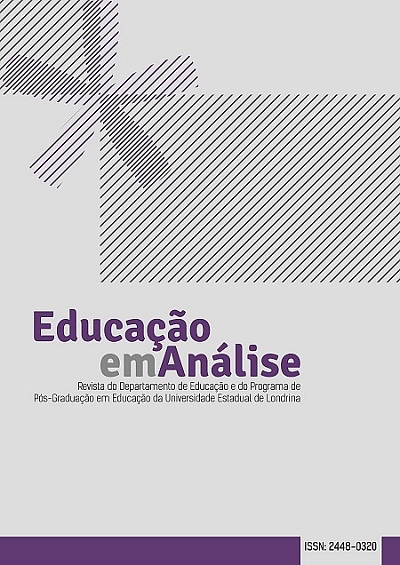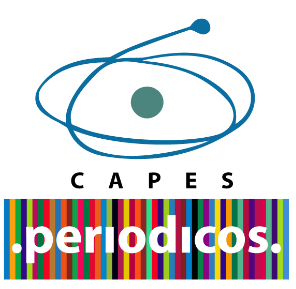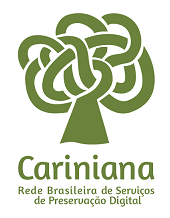Uma imagem vale mil palavras: representando listas de páginas da web usando imagens para pessoas com deficiências de aprendizagem
DOI:
https://doi.org/10.5433/1984-7939.2017v2n2p271Palavras-chave:
Representação gráfica, Design do site, Deficiencias de aprendizagem.Resumo
O uso de imagens, símbolos e outras representações gráficas em sites é uma prática comum e é aconselhável na literatura sobre design web, particularmente no que diz respeito a pessoas com dificuldades de aprendizagem. No entanto, há uma escassez de literatura sobre a eficácia de usar imagens dessa maneira e sobre o que poderia ser a representação pictórica mais eficaz de vários tópicos relacionados à "transição" - a mudança do ambiente protetor da escola para o mundo adulto de empregos apoiados e uma vida mais independente. O objetivo do estudo foi determinar quais foram as representações mais efetivas de temas relacionados à transição - como lazer, saúde e educação - em relação a três tipos de representação fotográfica e artística - fotos, ícones e Widgits. O estudo foi realizado em duas etapas. Uma etapa qualitativa explorou os significados dados a várias fotos e ícones, selecionados de sites e literatura apropriados. O estágio dois consistiu em um exercício on-line, no qual os participantes são apresentados com várias fotos ou outras representações e selecione a qual categoria pertence (saúde, trabalho etc.).Os resultados sugeriram que, embora insistivamente sensato, o uso da representação gráfica não pode realmente ajudar a compreensão do conteúdo, devido às dificuldades inerentes à tentativa de encapsular conceitos dentro de uma única representação. Tópicos mais concretos, como Amigos, são mais fáceis de representar de forma gráfica do que conceitos como Suporte ou Segurança. As representações mais efetivas foram fotográficas, sendo Widgits o menos efetivo. Um caso forte poderia ser feito a partir desses resultados para renderização de áudio de rótulos.Downloads
Referências
BOHMAN, P. Cognitive disabilities part 2: conceptualizing design considerations. WebAIM. Logan, 9 Aug. 2013b. Disponível em: https://webaim.org/articles/cognitive/conceptualize/. Acesso em: 18 dez. 2017.
BOOTH, Tim; BOOTH, Wendy. Sounds of silence: narrative research with inarticulate subjects. Disability and Society, Abingdon, v. 11, n. 1, p. 55-69, 1996.
BOOTH, Tim; BOOTH, Wendy. The use of depth interviewing with vulnerable subjects: lessons from a research study of parents with learning difficulties. Social Science and Medicine, Oxford, v. 39, n. 3, p. 415-424, Aug. 1994.
CARR, Deborah; FELCE, David. Application of stimulus equivalence to language intervention for individuals with severe linguistic disabilities. Journal of Intellectual and Developmental Disability, Abingdon, v. 25, n. 3, p. 181-205, 2000.
CHANDLER, Daniel. Semiotics: the basics. 3rd ed. Abingdon: Routledge, 2017.
FILLIPPATOU, Diamanto; PUMFREY, Peter David. Pictures, titles, reading accuracy and reading comprehension: a research review (1973-95). Educational Research, Abingdon, v. 38, n. 3, p. 259-291, 1996.
FINLAY, William Michael Logan; WALTON, Christopher; ANTAKI, Charles. Promoting choice and control in residential services for people with learning disabilities. Disability and Society, Abingdon, v. 23, n. 4, p. 349-360, 2 June 2008.
HARBER, Jean R. The effects of illustrations on the reading performance of learning disabled and normal children. Learning Disability Quarterly, New York, v. 6, n. 1, p. 55- 60, 1983.
HANNUS, Matti; HYÖNÄ, Jukka. Utilization of illustrations during learning of science textbook passages among low- and high-ability children. Contemporary Educational Psychology, New York, v. 24, n. 2, p. 95-123, Apr. 1999.
HOUTS, Peter S.; DOAK, Cecilia C.; DOAK, Leonard G.; LOSCALZO, Matthew J. The role of pictures in improving health communication: a review of research on attention, comprehension, recall, and adherence. Patient Education and Counseling, Limerick, v. 61, n. 2, p. 173-190, May 2006.
HUDSON, Roger; WEAKLEY, Russ; FIRMINGER, Peter. An accessibility frontier: cognitive disabilities and learning difficulties. Web Usability. Marrickville, 30 Jan. 2004. Disponível em: http://usability.com.au/2004/12/an-accessibility-frontiercognitive-disabilities-and-learning-difficulties-2004/. Acesso em: 18 dez. 2017.
JONES, Fergal W.; LONG, K.; FINLAY, William Michael Logan. Symbols can improve the reading comprehension of adults with learning disabilities. Journal of Intellectual Disability Research, Oxford, v. 51, n. 7, p. 545-550, July 2007.
MICHIELUTTE, Robert; BAHNSON Judy; DIGMAN, Mark B.; SCHROEDER, E. The use of illustrations and narrative text style to improve readability of a health education brochure. Journal of Cancer Education, New York, v. 7, n. 3, p. 251-260, 1992.
MINNION, Andrew; STAPLES, P.; SINGH, R.; WILLIAMS, P. Beyond the road ahead. London: University of East London, 2008.
MOLL, John Michael Henderson. Doctor-patient communication in rheumatology: studies of visual and verbal perception using educational booklets and other graphic material. Annals of Rhuematic Disease, London, v. 45, n. 3, p. 198-209, Mar. 1986.
MORRIS, Jenny. Social exclusion and young disabled people with high levels of support needs. Critical Social Policy, London, v. 21, n. 2, p. 161-183, 1 May 2001.
MORRIS, Jenny. Young disabled people moving into adulthood. York: Joseph Rowntree Foundation, 2002.
PEARSON, Elaine; KOPPI, Tony. Developing inclusive practices: evaluation of a staff development course in accessibility. Australian Journal of Educational Technology, Carlingford, v. 19, n. 3, p. 275-292, 2003.
PONCELAS, Angela; MURPHY, Glynis. Accessible information for people with intellectual disabilities: do symbols really help? Journal of Applied Research in Intellectual Disabilities, Hoboken, v. 20, n. 5, p. 466-447, 14 Mar. 2007.
READANCE, John E.; MOORE, David W. A meta-analytic review of the effect of adjunct pictures on reading comprehension. Psychology in the Schools, Oxford, v. 18, n. 2, p. 218-224, Apr. 1981.
SEVILLA, Javier; HERRERA, Gerardo; MARTINEZ, Bibiana; ALCANTUD, Francisco. Web accessibility for individuals with cognitive deficits: a comparative study between an existing commercial web and its cognitively accessible equivalent. ACM Transactions on Computer-Human Interaction, New York, v. 14, n. 3, p. 1-23, Jan. 2007.
SIDMAN, Murray. Equivalence relations: where do they come from? In: BLACKMAN, Derek E.; LEJEUNE, Helga (Ed.). Behavior analysis in theory and practice: contributions and controversies. Hillsdale: Erlbaum, 1990. p. 93-114.
SINGH, Saamer; GEDEON, Tamàs Domonkos; RHO, Youngju. Enhancing comprehension of web information for users with special linguistic needs. Journal of Communication, Oxford, v. 48, n. 2, p. 86-108, June 1998.
TARLETON, Beth. The road ahead? Information for young people with learning difficulties, their families and supporters at transition. Bristol: University of Bristol, 2004.
TOWNSLEY, Ruth. The road ahead? What does the literature tell us about the information needs of young people with learning difficulties and their families at transition? Bristol: University of Bristol, 2004.
W3C - World Wide Web Consortium. 15 May 2017. How People with Disabilities Use the Web. Disponível em: https://www.w3.org/WAI/people-use-web/. Acesso em: 18 dez. 2017.
WARD, Linda; HESLOP, Pauline; MALLETT, Robina; SIMONS, Ken. Transition: the experiences of young people with learning disabilities and their families in England. Tizard Learning Disability Review, Bingley, v. 8, n. 4, p. 19-28, Oct. 2003.
WIDGIT. About Widgit. Disponível em: http://www.widgit.com/aboutus.htm. Acesso em: 18 dez. 2017.
WILLIAMS, Peter. Transition and people with learning disabilities: reflections on the quality of content that emerges from the process of involving service-users in information provision. Aslib Proceedings, Bingley, v. 60, n. 5, p. 474-492, 2008.
Downloads
Publicado
Como Citar
Edição
Seção
Licença
Copyright (c) 2017 Educação em Análise

Este trabalho está licenciado sob uma licença Creative Commons Attribution 4.0 International License.
Os artigos publicados na Revista Educação em Análise estão sob a Licença Creative Commons Atribuição 4.0 Internacional, garantindo Acesso Aberto. Deste modo, os autores mantêm os direitos autorais de seus trabalhos e, em caso de republicação, solicita-se que indiquem a primeira publicação nesta revista. Essa licença permite que qualquer pessoa leia, baixe, copie e compartilhe o conteúdo, desde que a devida citação seja feita. Além disso, autoriza a redistribuição, adaptação e criação de obras derivadas em qualquer formato ou meio, incluindo uso comercial, desde que a atribuição à revista seja mantida.
A revista se reserva o direito de efetuar, nos originais, alterações de ordem normativa, ortográfica e gramatical, com vistas a manter o padrão culto da língua e a credibilidade do veículo. Respeitará, no entanto, o estilo de escrever dos autores. Alterações, correções ou sugestões de ordem conceitual serão encaminhadas aos autores, quando necessário.
As opiniões emitidas pelos autores dos artigos são de sua exclusiva responsabilidade.

























